Category Archives: AI
SVM – Understanding C Value with Code Examples
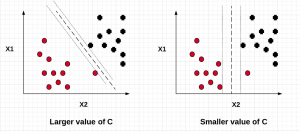
In this post, we will understand the importance of C value on the SVM soft margin classifier overall accuracy using code samples. In the previous post titled as SVM as Soft Margin Classifier and C Value, the concepts around SVM soft margin classifier and the importance of C value was explained. If you are not sure about the concepts, I would recommend reading earlier article. Lets take a look at the code used for building SVM soft margin classifier with C value. The code example uses the SKLearn IRIS dataset In the above code example, take a note of the value of C = 0.01. The model accuracy came out to …
SVM as Soft Margin Classifier and C Value
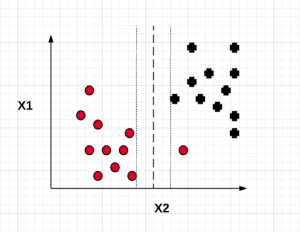
In this post, you will learn about SVM (Support Vector Machine) as Soft Margin Classifier and the importance of Value of C. In the previous post, we learned about SVM as maximum margin classifier. What & Why of SVM as Soft Margin Classifier? Before getting into understanding what is Soft Margin Classifier version of SVM algorithm, lets understand why we need it when we had a maximum margin classifier. Maximum margin classifier works well with linearly separable data such as the following: When maximum margin classifier is trained on the above data set with maximum distance (margin) between the closest points (support vectors), we can get a hyperplane which can separate the data in a clear …
Top 5 Data Analytics Methodologies

Here is a list of top 5 data analytics methodologies which can be used to solve different business problems and in a way create business value for any organization: Optimization: Simply speaking, an optimization problem consists of maximizing or minimizing a real function by systematically choosing input values (also termed as decision variables) from within an allowed set and computing the value of the function. An optimization problem consists of three things: A. Objective function B. Decision variables C. Constraint functions (this is optional) Linear / Non-linear programming with constrained / unconstrained optimization Linear programming with constrained optimization Objective function and one or more constraint functions are linear with decision variables as continuous variables Linear programming with unconstrained optimization Objective function …
Contract Management Use Cases for Machine Learning

This post briefly represent the contract management use cases which could be solved using machine learning / data science. These use cases can also be termed as predictive analytics use cases. This can be useful for procurement business functions in any manufacturing companies which require to procure raw materials from different suppliers across different geographic locations. The following are some of the examples of industry where these use cases and related machine learning techniques can be useful. Pharmaceutical Airlines Food Transport Key Analytics Questions One must understand the business value which could be created using predictive analytics use cases listed later in this post. One must remember that one must start with questions …
Why Deep Learning is called Deep Learning?
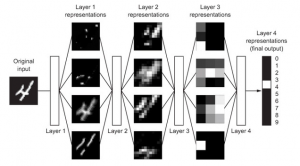
In this post, you will learn why deep learning is called as deep learning. You may recall that deep learning is a subfield of machine learning. One of the key difference between deep learning and machine learning is in the manner the representations / features of data is learnt. In machine learning, the representations of data need to be hand-crafted by the data scientists. In deep learning, the representations of data is learnt automatically as part of learning process. As a matter of fact, in deep learning, layered representations of data is learnt. The layered representations of data are learnt via models called as neural networks. The diagram below represents …
Difference – Artificial Intelligence & Machine Learning
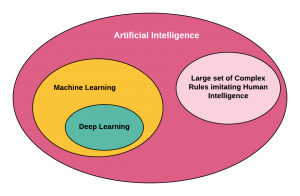
In this post, you learn the difference between artificial intelligence & machine learning. Artificial intelligence represents a set of computer programs that imitate human intelligence. The diagram below represents the key difference between AI and Machine Learning. Basically, machine learning is a part of AI landscape. One can do AI without doing machine learning or deep learning. Thus, an organization can claim that they have AI-based systems without having machine learning or deep learning based systems. All machine learning or deep learning based systems can be termed as AI systems. But, all AI systems may not be termed as machine learning systems. The following are key building blocks of an …
Machine Learning Models Evaluation Infographics
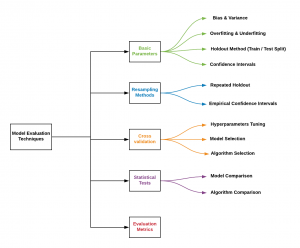
In this post, you will get an access to a self-explanatory infographics / diagram representing different aspects / techniques which need to be considered while doing machine learning model evaluation. Here is the infographics: In the above diagram, you will notice that the following needs to be considered once the model is trained. This is required to be done to select one model out of many models which get trained. Basic parameters: The following need to be considered for evaluating the model: Bias & variance Overfitting & underfitting Holdout method Confidence intervals Resampling methods: The following techniques need to be adopted for evaluating models: Repeated holdout Empirical confidence intervals Cross-validation: Cross …
Infographics for Model & Algorithm Selection & Evaluation
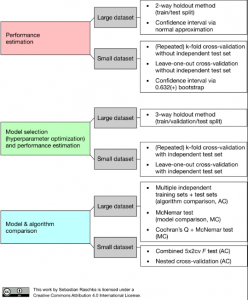
This is a short post created for quick reference on techniques which could be used for model evaluation & selection and model and algorithm comparision. This would be very helpful for those aspiring data scientists beginning to learn machine learning or those with advanced data science skills as well. The image has been taken from this blog, Comparing the performance of machine learning models and algorithms using statistical tests and nested cross-validation authored by Dr. Sebastian Raschka The above diagram provides prescription for what needs to be done in each of the following areas with small and large dataset. Very helpful, indeed. Model evaluation Model selection Model and algorithm comparison …
Feature Scaling & Stratification for Model Performance (Python)
In this post, you will learn about how to improve machine learning models performance using techniques such as feature scaling and stratification. The following topics are covered in this post. The concepts have been explained using Python code samples. What is feature scaling and why one needs to do it? What is stratification? Training Perceptron model without feature scaling and stratification Training Perceptron model with feature scaling Training Perceptron model with feature scaling and stratification What is Feature Scaling and Why is it needed? Feature scaling is a technique of standardizing the features present in the data in a fixed range. This is done when data consists of features of varying …
Python DataFrame – Assign New Labels to Columns
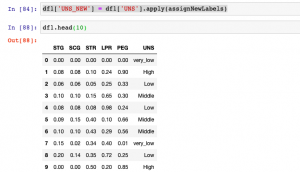
In this post, you will get a code sample related to how to assign new labels to columns in python programming while training machine learning models. This is going to be very helpful when working with classification machine learning problem. Many a time the labels for response or dependent variable are in text format and all one wants is to assign a number such as 0, 1, 2 etc instead of text labels. Beginner-level data scientists will find this code very handy. We will look at the code for the dataset as represented in the diagram below: In the above code, you will see that class labels are named as very_low, Low, High, Middle …
Difference between Adaline and Logistic Regression
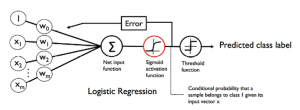
In this post, you will understand the key differences between Adaline (Adaptive Linear Neuron) and Logistic Regression. Activation function Cost function Difference in Activation Function The primary difference is the activation function. In Adaline, the activation function is called as linear activation function while in logistic regression, the activation function is called as sigmoid activation function. The diagram below represents the activation functions for Adaline. The activation function for Adaline, also called as linear activation function, is the identity function which can be represented as the following: $$\phi(W^TX) = W^TX$$ The diagram below represents the activation functions for Logistic Regression. The activation function for Logistic Regression, also called as sigmoid activation function, is …
Logistic Regression: Sigmoid Function Python Code
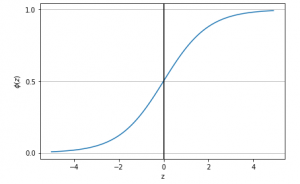
In this post, you will learn about the following: How to represent the probability that an event will take place with the asssociated features (attributes / independent features) Sigmoid function python code Probability as Sigmoid Function The below is the Logit Function code representing association between the probability that an event will occur and independent features. $$Logit Function = \log(\frac{P}{(1-P)}) = {w_0} + {w_1}{x_1} + {w_2}{x_2} + …. + {w_n}{x_n}$$ $$Logit Function = \log(\frac{P}{(1-P)}) = W^TX$$ $$P = \frac{1}{1 + e^-W^TX}$$ The above equation can be called as sigmoid function. Python Code for Sigmoid Function Executing the above code would result in the following plot: Pay attention to some of the …
Three Key Challenges of Machine Learning Models
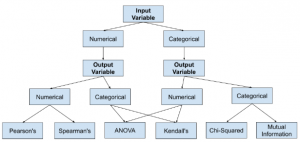
In this post, you will learn about the three most important challenges or guiding principles that could be used while you are building machine learning models. The three key challenges which could be adopted while training machine learning models are following: The conflict between simplicity and accuracy Dimensionality – Curse or Blessing? The multiplicity of good models The Conflict between Simplicity and Accuracy Before starting on working for training one or more machine learning models, one would need to decide whether one would like to go for simple model or one would want to focus on model accuracy. The simplicity of models could be achieved by using algorithms which help …
Hypergeometric Distribution Explained with 10+ Examples
In this post, we will learn Hypergeometric distribution with 10+ examples. The following topics will be covered in this post: What is Hypergeometric Distribution? 10+ Examples of Hypergeometric Distribution If you are an aspiring data scientist looking forward to learning/understand the binomial distribution in a better manner, this post might be very helpful. The Binomial distribution can be considered as a very good approximation of the hypergeometric distribution as long as the sample consists of 5% or less of the population. One would need a good understanding of binomial distribution in order to understand the hypergeometric distribution in a great manner. I would recommend you take a look at some of my related posts on …
Binomial Distribution with Python Code Examples
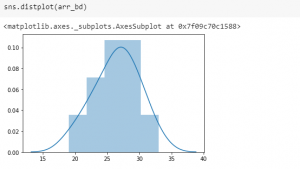
In this code, you will learn code examples, written with Python Numpy package, related to the binomial distribution. You may want to check out the post, Binomial Distribution explained with 10+ examples to get an understanding of Binomial distribution with the help of several examples. All of the examples could be tried with code samples given in this post. Here are the instructions: Load the Numpy package: First and foremost, load the Numpy and Seaborn library Code Syntax – np.random.binomial(n, p, size=1): The code np.random.binomial(n, p, size=1) will be used to print the number of successes that will happen in one (size=1) experiment comprising of n number of trials with probability/proportion of success being p. Tossing a …
Beta Distribution Example for Cricket Score Analysis

This post represents a real-world example of Binomial and Beta probability distribution from the sports field. In this post, you will learn about how the run scored by a Cricket player could be modeled using Binomial and Beta distribution. Ever wanted to predict the probability of Virat Kohli scoring a half-century in a particular match. This post will present a perspective on the same by using beta distribution to model the probability of runs that can be scored in a match. If you are a data scientist trying to understand beta and binomial distribution with a real-world example, this post will turn out to be helpful. First and foremost, let’s identify the random variable that we would like …
I found it very helpful. However the differences are not too understandable for me